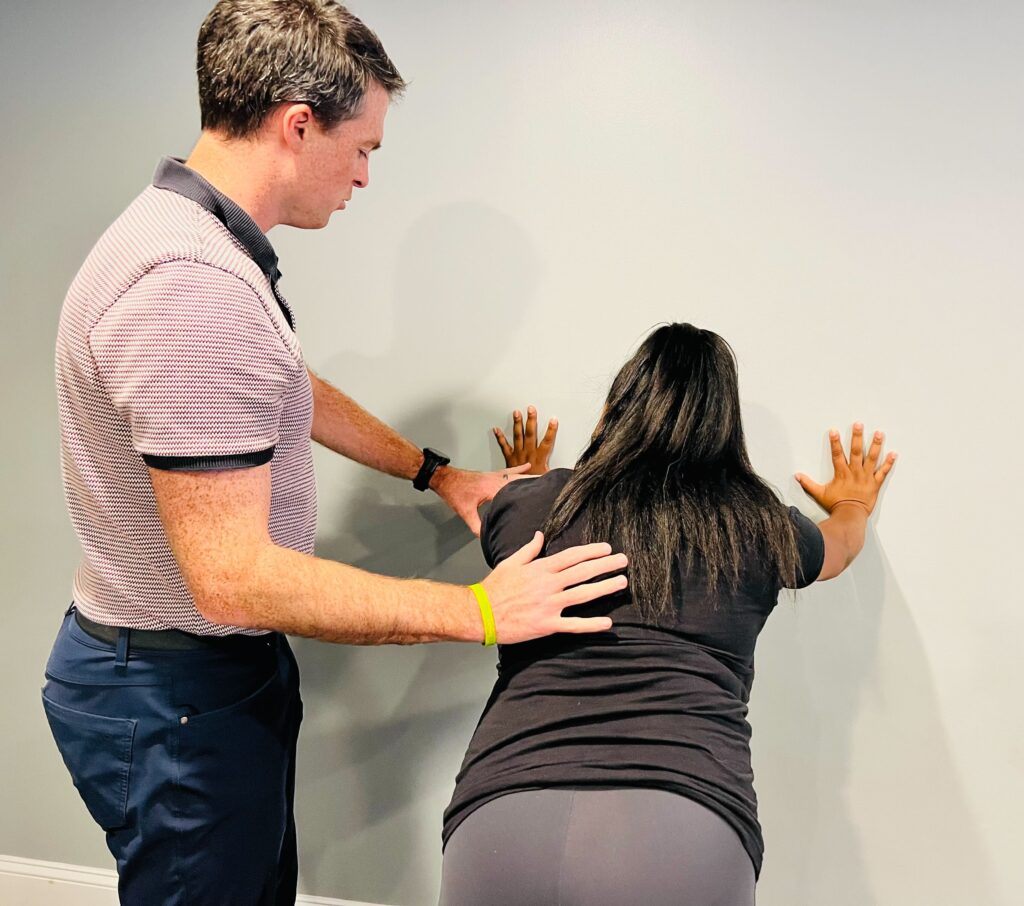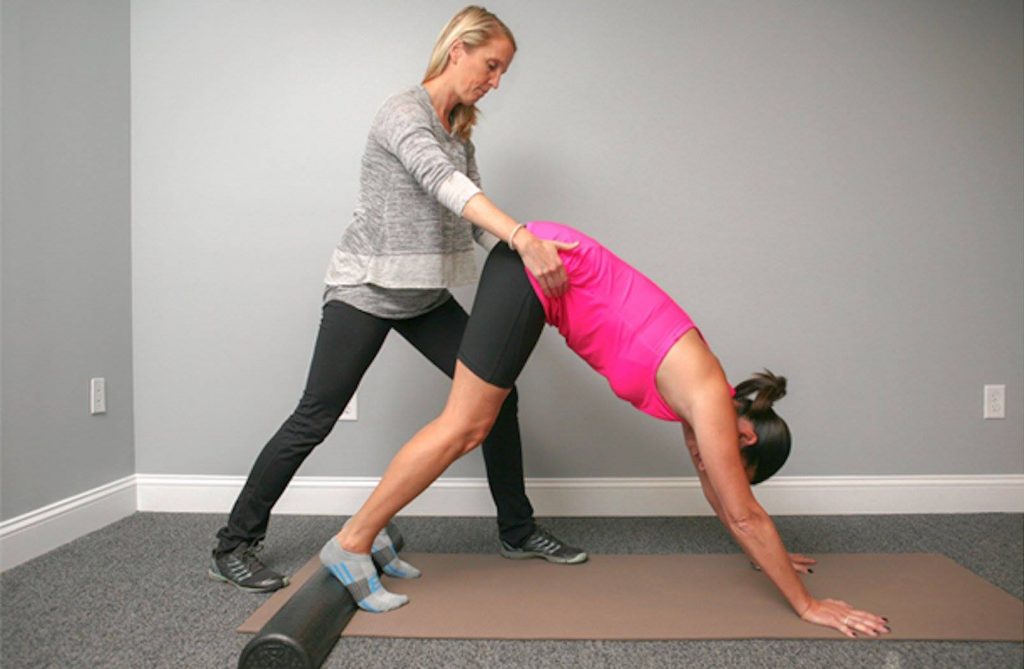Let’s dive into the top 4 exercises for osteoporosis. These will help to improve balance, posture and flexibility so that you can avoid injuries associated with weak and brittle bones.
-
Doorway Chest/Pectoralis Stretch for Osteoporosis

This is an excellent stretch for the pectoralis or the front chest muscles displayed by our very own Dr. Hina Sheth. It helps improve posture and improve shoulder flexibility.
Stand in a doorway with both arms on the frame of the door as demonstrated in the image. Place one leg (with knee straight) behind, and one leg (slightly bent at the knee) in front. Lean forward into the door until a stretch is felt across the front of the chest. Hold this stretch for 30 seconds to 1 minute. If you do not feel a stretch with this positioning, then place your arms either slightly lower or higher until you feel a stretch.
Precautions: shoulder dislocations or subluxations, frozen shoulder. Seek guidance from one of our physical therapist for modifications.
2. Squat Exercises for Osteoporosis

The squat is an excellent exercise that works many different muscles of the lower body. It can be an excellent exercise a part of a gym or home routine to build strength and endurance.
Stand with your knees and feet hip width apart. Feet face forward. Start to bend your hip and knees as if you are going to sit in a chair. Your weight should be slightly back on your heels. Knees should stay in line with the second toe and should not cross the shoe. Your hips should create a deep crease in the front as you think about your sit bones going wide. You should not squat any deeper then 90 degrees.
3. Prone T Exercises for Osteoporosis

Prone T exercises are a simple and effective way to strengthen your upper back and help improve your posture.
First, carefully lie face down on the stability ball or you can perform this on a work out bench with both arms out to the side. Doing this exercise on a theraball will be more challenging. Keep your knees bent (if performing on a stability ball for balance or straight for a more challenging exercise, depending on your needs). Hold a weight in each hand if using just your arms is too simple. Once again, the amount of weight you should use depends on your own factors (such as your specific injury or personal pain level). Holding the weights, gently squeeze your shoulders towards one another to raise your arms out to your sides. Stop raising your arms once they form 90 degree angles with each of your sides. Keep your elbows straight. Your thumbs should be facing towards your head. Your body will now be in the shape of the letter t. Return to your original neutral position and repeat. You should not feel as though you are using your upper trapezius to perform this exercise. You should not experience any neck staring.
Performing 2-3 sets of 10 is a good start, but only do as many as you can while keeping excellent form.
Precautions: Consult the Rebalance team for instructions regarding the types of weights you should use and the positioning that is appropriate for you. Also, seek advise from our therapists if you have pain or injuries related to the back, neck or shoulders before performing this exercise.
4. Bridge Pose Variation Exercises for Osteoporosis

This pose strengthens your hamstrings, buttocks, back muscles and spine while it simultaneously stretches your quadriceps, groin, abdomen and neck muscles.
The pose also has a calming effect on the nervous system that comes from the positions of the head and neck in relation to the chest. This pose is said to calm the flow of thoughts and relax the mind.
Lie down on your back with your knees bent and arms by your sides. Keep your thighs and feet parallel and hip-distance apart. Extend your arms toward your feet. Press your feet down firmly and then lift your hips. Broaden your collarbones. Rotate both arms by turning your inner arm toward your outer arm. Keep the outer shoulders steady and lift the ribs back to open and spread the chest. Lengthen the back of your neck. Remain in the pose and breathe normally to create more space and fullness in your chest and abdominals.Precautions: Do not do this pose in the third trimester of pregnancy, if you have spinal stenosis, facet joint dysfunction, scoliosis, severe osteoporosis, neck problems or experience pain in your knees when doing the pose.
If you have any precautionary conditions or have discomfort with this exercise, please talk to the Rebalance team for modifications and instructions.
Read More:





